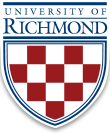The University of Richmond Museums presents Threads of Silk and Gold: Chinese Textiles from the Qing Dynasty, on view from January 17 to May 16, 2014, in the Lora Robins Gallery of Design from Nature. The textiles of the Qing (Ch’ing) Dynasty (1644-1911) represent the culmination of more than two thousand years of Imperial rule dictating the styles of dress not only for the royal family and the tens of thousands of people living and working in the Forbidden City, but also for everyone involved in China’s vast civil bureaucracy, military, and their families spread throughout the Empire. The exhibition features Chinese textiles selected from the Franklin B. Propert Collection, and it focuses on examples of many of the techniques used to produce these remarkable textiles, as well as explaining many of the symbols employed to denote the wearer’s rank in Chinese society.
In 1644, the Manchu people from northeast China, under the ruse of assisting the former Ming rulers, regained power from the invading Shun Dynasty, overthrew the government and took control of the Empire. The Manchus established the Qing Dynasty, meaning “pure,” which would last until the collapse of two thousand years of Imperial rule in 1911. To gain legitimacy and acceptance from the Han Chinese, the majority ethnicity who had lived under Ming rule for nearly three hundred years, the Qing rulers appropriated many Ming customs. In addition to continuing the Ming form of government and employing half of the previous dynasty’s officials, the Manchus adopted a style of Imperial dress that was not drastically different from the Ming pao costume. This united the Empire by making the Han Chinese indistinguishable from the Manchu conquerors, thus making rebellion less likely.
Several styles of the robes are included in the exhibition. Under Imperial decree, the formality of the occasion dictated which style of dress Qing citizens should wear. For the most formal state events, officers and members of the court and their families were to wear a chaofu, meaning “court costume,” a robe with long sleeves that usually ended with horse-hoof shaped cuffs, as well as a detached collar and an attached skirt. For daily life in court, men and women wore the semi-formal qifu, which included the classic “dragon robe.” Like the chaofu, the qifu had an overlapping front flap that closed over the right breast, long horse-hoof cuff sleeves, and a close fitting collar. But being less formal, the robes had a slightly shorter skirt with extra slits on the front and back in addition to those on the sides, an alteration made to the Ming-style robes to suit the more active Manchu lifestyle. The third and least formal official attire is the changfu, or “long coat,” which is featured predominately in the exhibition.
Color and design of Qing Dynasty garments could be indicative of social status as well as convey sentimental messages. One example of this is the wedding robe of a male official, probably the father of the bride. The garment is woven in blue-black silk, a color used exclusively to distinguish military and civil officials from the emperor’s family and the general public. Woven in the same color throughout the garment is the character shuang-xi, meaning “double happiness,” which represents a harmonious marriage. Featured predominantly on the robe are six embroidered peacock roundels, which reference the Chinese idiom que ping zhong xuan, meaning “screened by the peacock screen.” According to legend, a father once challenged his daughter’s suitors to shoot an arrow through the eye of a peacock painted on a screen to decide who would win her hand in marriage. Fathers of brides would wear the peacock to weddings to indicate wishes for a well-matched and prosperous marriage.
Elaborate techniques used to create patterns on a garment could both display one’s socio-economic status as well as assist in social climbing. One such changfu robe is made of greenish-yellow raw silk, a color largely reserved for Imperial consorts. It features dozens of embroidered butterflies throughout the garment, a pattern known as “one-hundred butterflies.” To the Chinese, butterflies were auspicious symbols representing wishes for longevity, wealth, and conjugal felicity. The Chinese character for “butterfly” is also a homophone for “repeat,” so for a consort to wear a robe embroidered with many butterflies, she could send the message to the emperor promising romantic bliss again and again. The robe is particularly valuable because the butterflies were constructed using the kesi, or “cut silk,” weaving technique. The laborious process would have taken a year or more to weave by hand, so this robe alone likely would have cost a Qing official his entire annual salary. Therefore being able to afford a kesi robe was a clear indication of one’s economic status.
Other works featured in this exhibition include embroidered adult women’s shoes, which by their size indicate the effects of foot binding practices among the Han Chinese. The “1000 Buddhas” kashaya is a Buddhist priest robe made up of twenty-five vertical columns with applied bands of embroidered Buddhas, and would have been reserved for the highest-ranking clergy during ceremonial events. In addition to clothing, the exhibition also showcases accessories such as embroidered drawstring silk purses, which would have been tied to the unattached belt of a robe both for ornamental purposes and to serve as pockets, as the robes had none.
Organized by the University of Richmond Museums, the exhibition was curated by Richard Waller, Executive Director, University Museums, and Haley Jones, ’14, leadership studies major, University of Richmond, 2012 Harnett Summer Research Fellow, and 2013-2014 curatorial assistant, University Museums.





